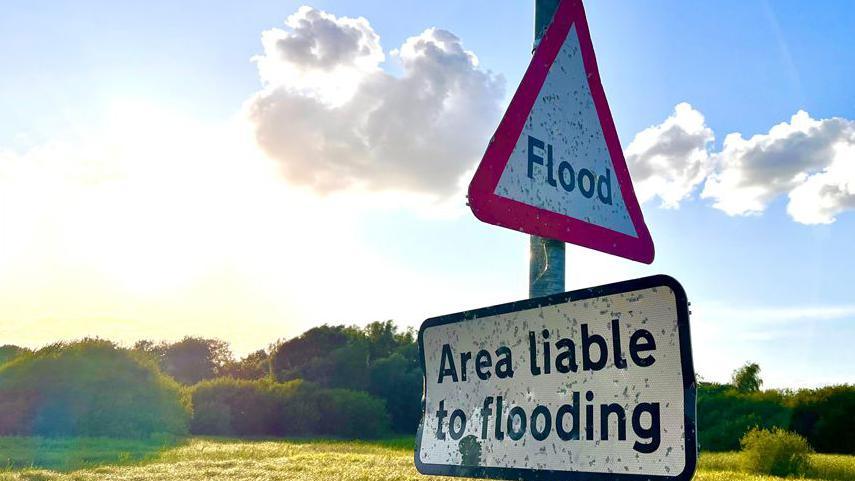Earliest autumn flooding in memory say villagers
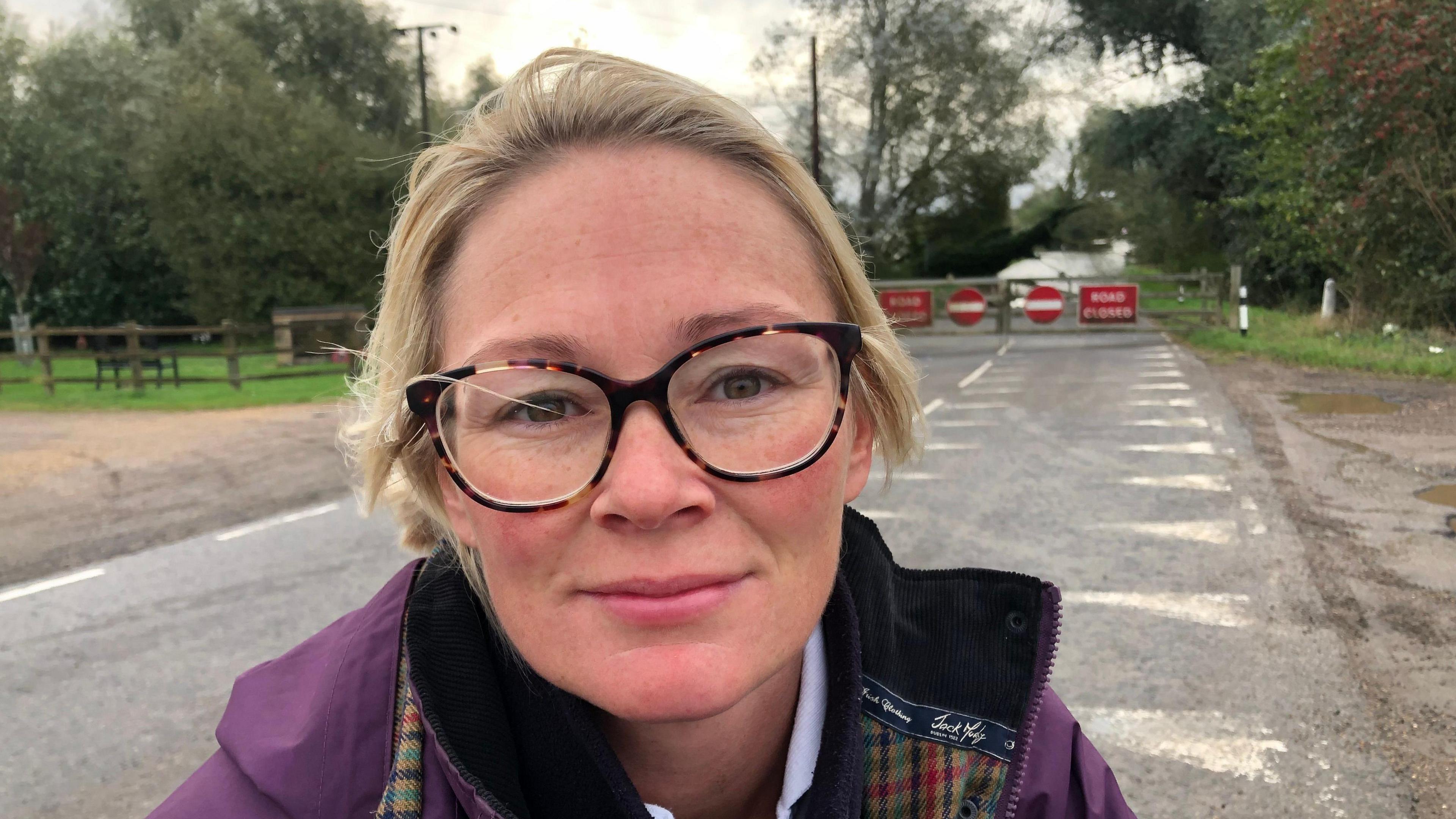
Stacey Buchanan, 34, said she had no option but to cycle through the flood to get her child to school
- Published
Residents of a Cambridgeshire village said they had never known one of the main routes out of it to flood in early autumn.
The A1123 Earith causeway, alongside the River Great Ouse, is a well-known flood location, but villagers told the BBC it was being closed more often in the year.
Long-term residents said flooding was normally an issue in other seasons, with one saying the road closure had a "huge financial and educational impact on families".
The county council has been forced to shut a number of other routes that usually flood in winter, urging people to take precautions, external in the wet weather.

When the Earith causeway gates are shut to the east of the village, it means long diversions when going to places like Cambridge and Ely
Stacey Buchanan, 34, has lived in the village, north of Cambridge, for 15 years.
She has a 10-year-old daughter she needs to get to school on the other side of the flooded road.
"My daughter and I will be cycling through the flooded road, which has a huge safety implication. She goes to the school in the village of Over and I work for the NHS.
"Call me a bad parent, but she needs an education. I have another child at home who is refusing to go to school because he would face a 90-minute diversion. The time he gets in, he'd have missed a big chunk of the day.
"I have had enough of living here. I'll be looking to sell-up next year, although the house price will be dropping no doubt because of this situation."
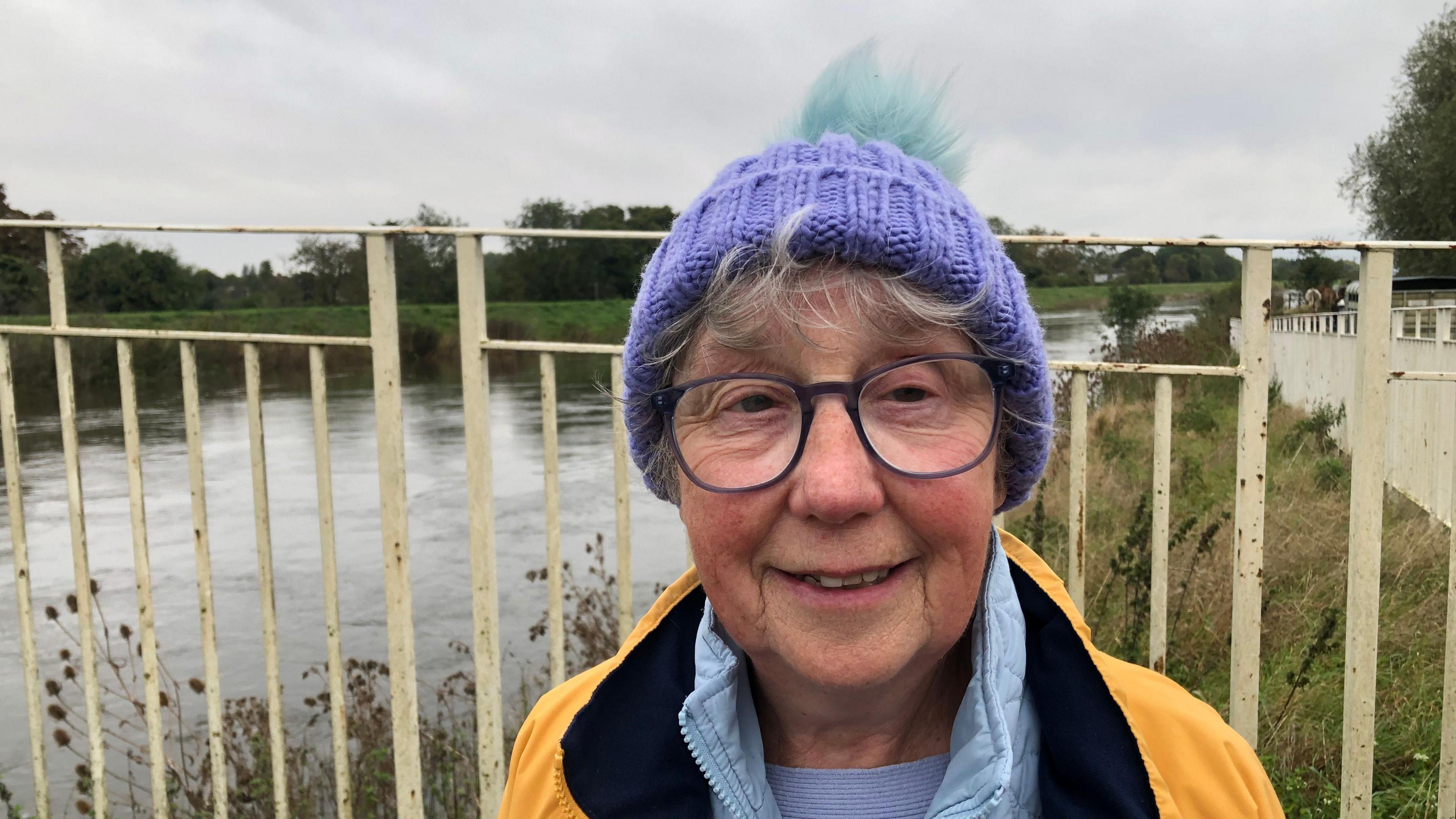
Pat Leavesley, 70, has lived in Earith for 44 years and cannot remember the causeway flooding in early autumn
Seventy-year-old Pat Leavesley, who has lived in Earith for 44 years, said: "The gates were closed over the weekend, and it might be shut here for some time with more rain forecast.
"It was shut four times last winter, which is unusual. It's normally an issue in winter and spring once or twice a year.
"Traffic in St Ives gets gridlocked with diversions. It really does cause havoc locally when it's flooded, which is happening more and now sooner than normal."
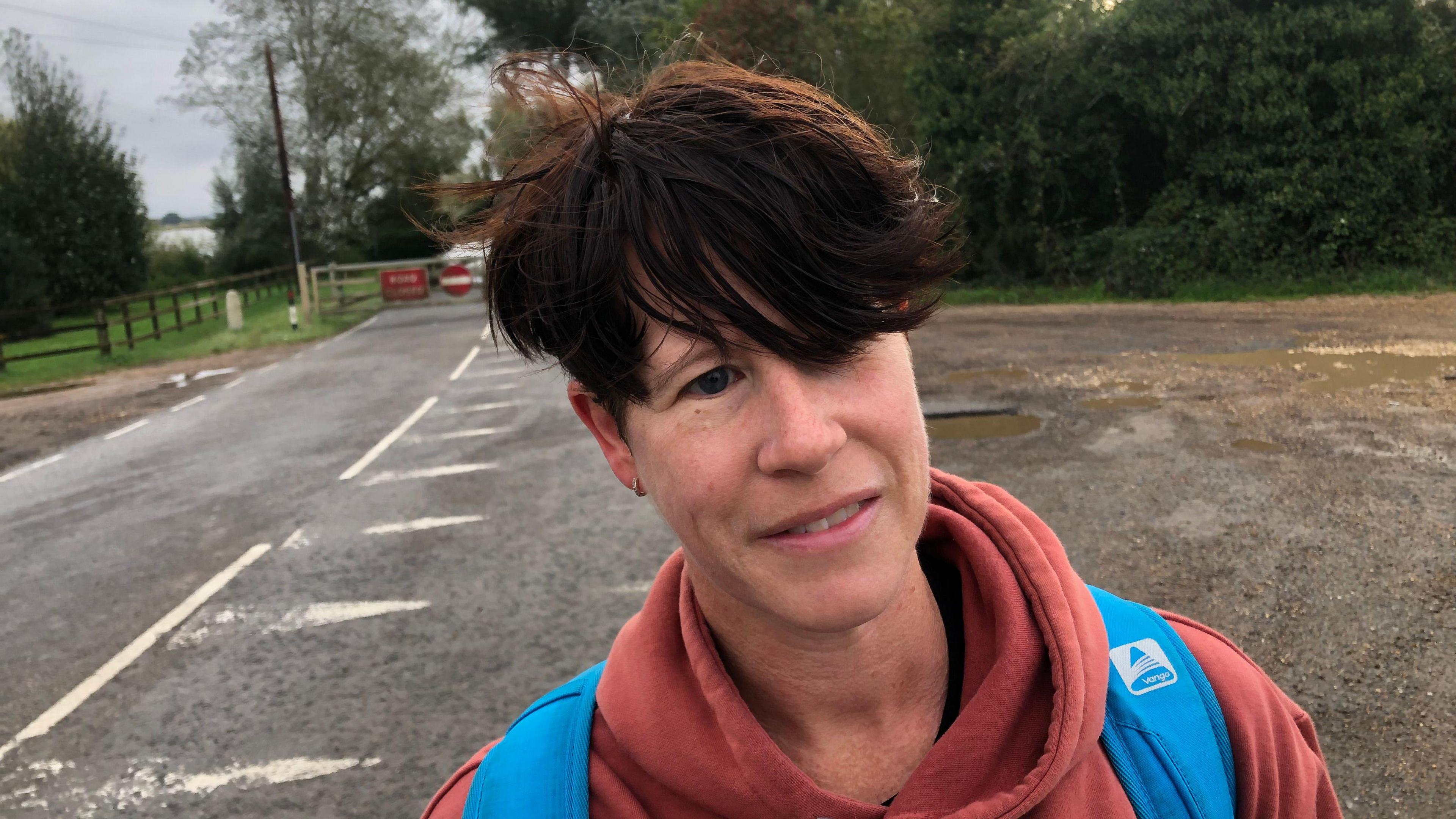
Lee-Anne Bower walks through the flooded road in order to save herself a 40-minute diversion
Another resident, Lee-Anne Bower, said she would not recommend walking through a closed, flooded road, but she said with the depth of about 30cm (12in) she was happy to do so at her own risk, to avoid a big diversion.
"I know the area well and when I can't see the grass on the verge I wouldn't do it, but what else can you do? The current is pretty fast too, so it is not really advisable.
"Sat-nav devices don't seem to pick up that there is a road closure in place here. You see lots of traffic coming down, then have to try and turn around and find a different route."
The government's flood warnings, external state that river levels remain high from Brampton to Earith, including at Back Brook, Hall Green Brook, Parsons Drove Drain, Swavesey Drain and Wadsbys Folly.
It has urged people to take care on riverside roads and footpaths and to "not put yourself in unnecessary danger".
Scientists say many extreme weather events are becoming more frequent and intense as a result of climate change.
Get in touch
Do you have a story suggestion for Cambridgeshire?
Follow Cambridgeshire news on BBC Sounds, Facebook, external, Instagram, external and X, external.
Related topics
Related stories
- Published22 February 2024
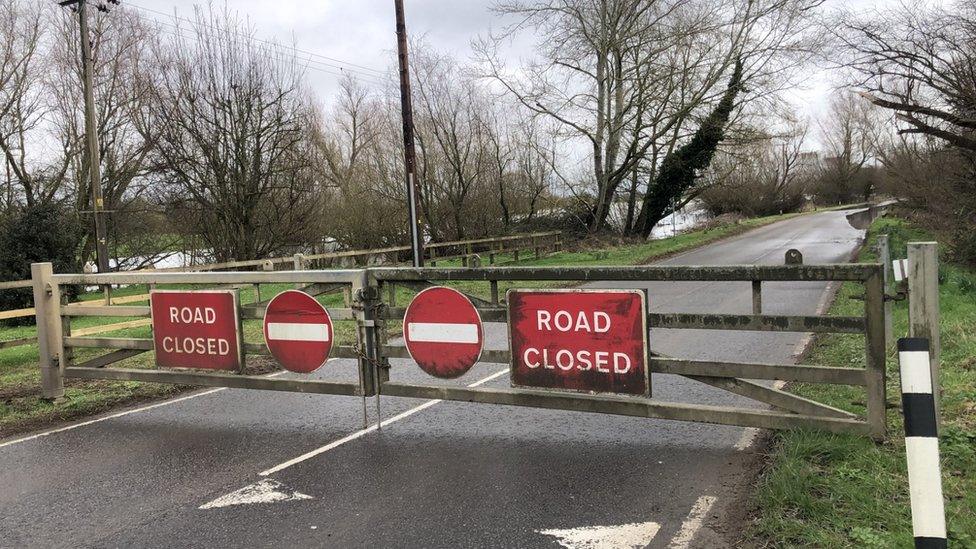
- Published24 September 2024
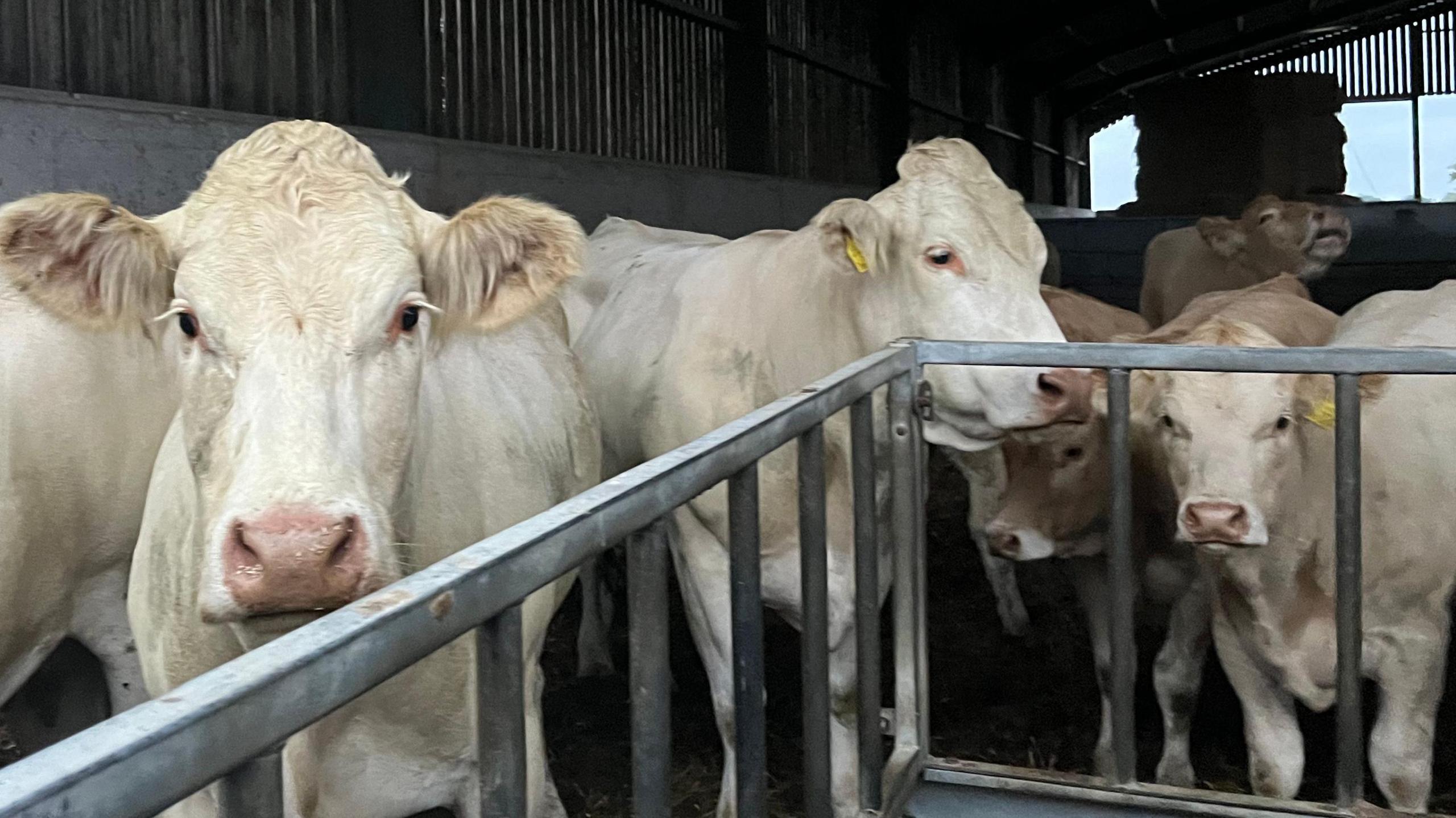
- Published29 September 2024
